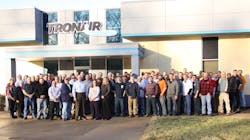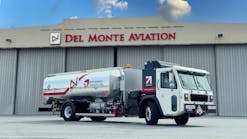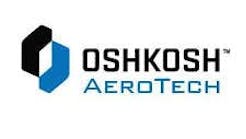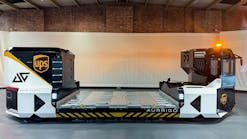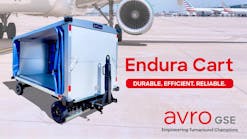The deal, three years in the making, started at NBAA 2013, just two weeks after CEO and President Harley Kaplan and Mark Iddon, executive vice president of sales and marketing, started at Tronair.
“We met John and Jace Morgan, the former owners of Eagle, and the idea kind of floated between us all,” Kaplan said in a December phone interview just after the announcement of the acquisition. “But at the time, our platter was more than full, just trying to understand Tronair.”
But the four, as well as Josh Green, vice president of strategic planning and Tronair’s CFO, stayed in touch. The Tronair trio found their footing in Ohio and called their counterparts to the north again in May of last year.
“They were kind of coy sellers, but it was pretty obvious to us that they were interested in furthering the conversation,” Kaplan says. “It just made a ton of sense, and so we were fortunate to be able to strike a deal with John and Jace, and the rest is history.”
Former Eagle owner Jace Morgan has stayed on in a consultation capacity and will remain in that role at least through the bulk of 2016.
Immediately, the question was what would happen to the Eagle product line, the Eagle name and, most importantly, the 30-plus people who design, create, make, sell and support decades of Eagle products?
“I really believe that only a conceited CEO would ever get rid of the Eagle brand name, and I try not to be that guy,” Kaplan said in December. “So Eagles will be Eagles, and Tronairs will be Tronairs. It’s possible that the JetPorter, which is a Tronair product, will get branded under the Eagle brand soon, and create vehicle division.”
In addition, there have been no redundancy layoffs at Eagle and the Tronair employee base has grown approximately 30 percent with the addition of the Eagle brand and team.
“The sales side, though, is a full court press,” Kaplan says of their integration process.
Two months later, Ground Support Worldwide went to Michigan and to Ohio to check in on one of the most impactful acquisitions in recent industry memory.
The Power of Positivity
The plan in December was to utilize the sales infrastructure from Tronair, which Iddon has built over the past two years, to include the existing Eagle product line and integrate the two GSE portfolios.
Just a week before our visit, and just over a month since the ink dried on the sale, the Eagle crew saw firsthand the sales support upgrade they were being accepted into. The conference room at Eagle’s headquarters was filled with 18 Tronair salespeople champing at the bit to get Eagles into hangars and onto ramps worldwide.
Additionally, Tronair’s JetPorter product manager, Justin Akinleye, has already been promoted to product manager for both the JetPorter and Eagle product lines. The move comes as little surprise since Akinleye spent more than seven years at Eagle, finishing as director of global operations, before arriving at Tronair. The Eagle purchase was a homecoming of sorts for the former Marine.
“We have ISO and obviously we’re CE approved, and those are consistent quality programs,” Akinleye says of the advancement during his time at Eagle. “But now the Morgans having sold it to Tronair, we can now go to another level. That’s with all that other support.”
Part of the sales meeting, according to Kaplan, was to bring home the fact that Eagle was truly being accepted into the Tronair team. This wasn’t going to be an assimilation, it was truly an integration.
“They were walking in this room and their mouths were dropping because they’re used to having two, maybe three people selling the product,” Kaplan says. “They walk into a room of 18 people.”
The existing Eagle team is excited about the additional sales support.
“The sales force alone on Friday was amazing,” Adam Dudek, production manager at Eagle, says. “I met so many people, I couldn’t remember all their names, but they were from everywhere. That just, right there, says what’s going to happen.”
Dudek, who has been with Eagle for more than 25 years, had the same reservations any employee has when the company they work for is sold.
“I’ve been through it a couple of times,” Dudek says. “I was okay with it. It’s always a little nerve-wracking because you don’t know exactly what’s happening, but after meeting with the guys and stuff like that, I couldn’t be more excited.”
For Eagle, a company that has relied so much on the quality of the shop, the Tronair management’s interest in manufacturing puts to rest many of the concerns of those making the tractors.
“We’re going to keep running it and keep growing it,” Dudek says. “And that’s what I want to be a part of.”
Lessons Learned
This is not the Tronair’s first time around an acquisition. Nearly a decade ago, in the spring of 2006, Tronair purchased the JetPorter product line. JetPorter’s electric, towbarless tugs were the basis for a whole new division at Tronair at the time and have driven much of the company’s growth to the point that they’ve nearly reached the maximum possible capacity they’re going to be able to reach at their current facility – another reason for Eagle and crew to stay put in Taylor for the time being.
The JetPorter integration came with headaches, however.
Part of the problem, according to Kaplan, was that JetPorters were never really made a part of Tronair prior to the addition of Akinleye.
“When you decide that you’re going to acquire a business or a product line, you need to be totally committed to that integration of the product,” Kaplan says. “Everywhere from the sales line all the way through to the bottom line. That also includes developing the product and making sure the product is what it should be.”
According to Kaplan, when he and Iddon got to Tronair two years ago, their aforementioned trip to NBAA 2013 included certain revelations regarding their largest pieces of equipment.
“The first that struck us was we had this gigantic blue thing taking up all the space in our booth,” Kaplan says. “But it was amazing how many people came to the booth who didn’t know that we sold them and it was shocking how few we sold.
“So as we started to kind of peel the onion back, as you do when you’re new to a business, we realized there was no dedicated sales force to this product. I think the belief had been that it would just sort of melt in to the jacks, and the tow bars, and the hydraulic power units and everything else. But it won’t, because it’s a whole different sale.”
Tronair brass decided that they need a product manager specifically for JetPorter. A conduit for the company to invest time, resources and manpower to. That person was Akinleye.
But the investment and attention has helped. The process of educating the user base and supporting customers through proper maintenance and service availability has gone a long way in rehabbing the brand. And the manpower has helped new and old customers understand what JetPorter does.
“This Softcapture mechanism that we have is a patented product,” Iddon says. “It’s completely unique in the marketplace, but if you had talked to most people about it, about JetPorter, they may or may not have known about the Softcapture. They certainly didn’t realize how unique it was.”
The JetPorter Softcapture technology is certainly clever. So clever, in fact, that Ground Support Worldwide awarded Tronair the 2013 Ground Support Product Leader award for it.
"It’s much better on the landing gear, which is the last thing you want to damage on a regional carriers schedule is to mess up your landing gear,” Iddon says. “We had that, but nobody knew.”
The challenge now, with a full portfolio of GSE, is to make sure the troubles of the past don’t return to haunt the future.
“The integration is happening truly at that top-line level and we’ll see how it plays out,” Kaplan says. “I mean, quite frankly, I’ve made no bones about it: There’s not enough space here. Tronair doesn’t have enough space. We’re only an hour apart. So halfway is a nice place. We might just set up a friendly competition between Ohio and Michigan and see who wins.”
It’s a New Day
For people at Eagle, a new, corporatized environment will include institutionalized benefits they previously had to personally navigate.
“You know an example, having been here and left and experienced both sides, is continued education and training,” Akinleye says “For example, if you were working here prior to Tronair, you would have to have a pretty chummy relationship chat with your boss about doing things. Whereas at Tronair we have institutionalized support to help you fill the gap in your career to a stronger, better person.”
Those types of fringe benefits, Akinleye says, are something you have to sell to management when working for a family business. Those kinds of programs are the norm in a more institutionalized environment, and that investment comes from the multitude of shareholders that come with being a private equity company.
“Just the sense of responsibility is different,” Iddon says. “Whereas with the family business the responsibility is to the family and the employees, but also the sense of responsibility when you have shareholders and we have a responsibility to them. So it’s just a different perspective.”
In the immediate future, existing development plans for Eagle, Tronair and JetPorter will all continue. New products for all three Tronair brands will be released as planned.Additionally, the JetPorter line has already been rebranded as an Eagle product to develop the vehicle line to be managed as part of Akinleye’s new role.
In addition to the rebranding, Kaplan says he hopes that the overall portfolio – electric engines, internal combustion engines, towbars, towbarless and the thousands of other Tronair manufactured GSE – and support infrastructure being developed over the next year will bring more Tronair products onto the commercial ramp as well as the hangar. Traditionally, 60 percent of Tronair’s business has come from business and jet aviation.
“As historically we’ve been hangar guys and OEM guys,” Kaplan says. “We now have a really good transition tool along with another acquisition that we did early last year, which was the Wasp towbar line, to really get us on to the flight line. So I think we’re really well positioned for some very good organic growth over the next couple of years.”
You might think following a major acquisition like the one Tronair just completed that it might be time to let the dust settle. That it might be a time to slow down, let it breathe. That this portfolio might signal the end of acquisitions for Tronair.
“I wouldn’t say that,” Kaplan says. “We’re going to a lot of dances with a lot of people, but we haven’t put any rings on fingers outside of what you see.”
